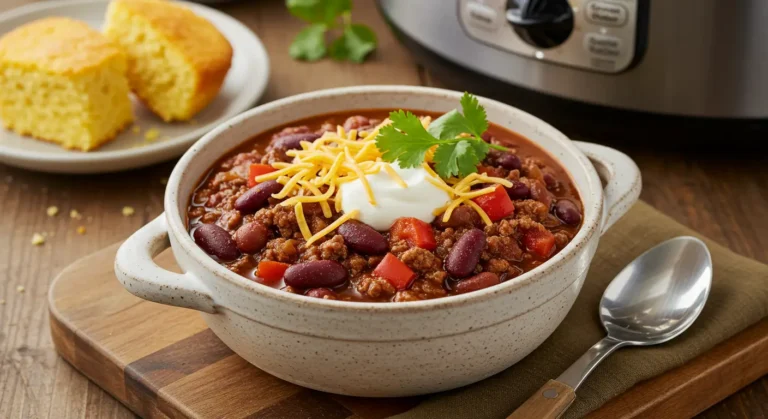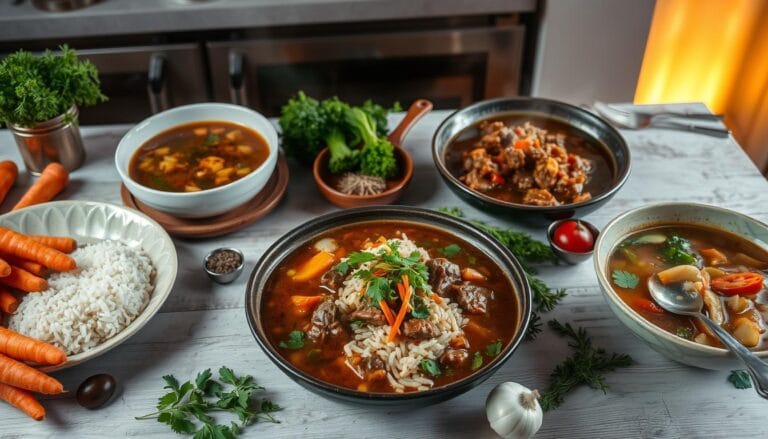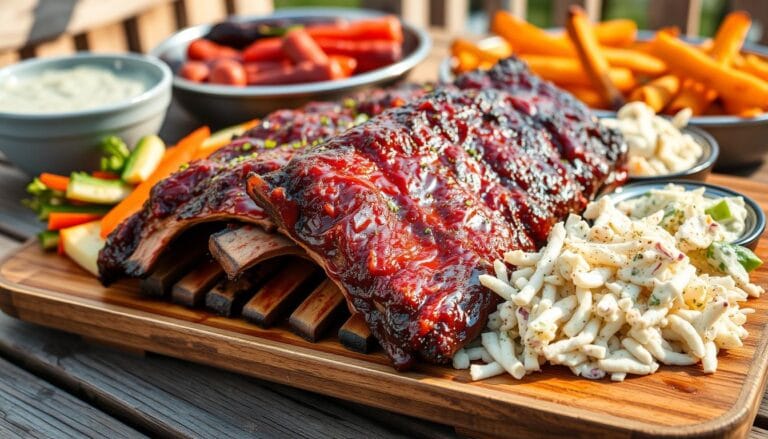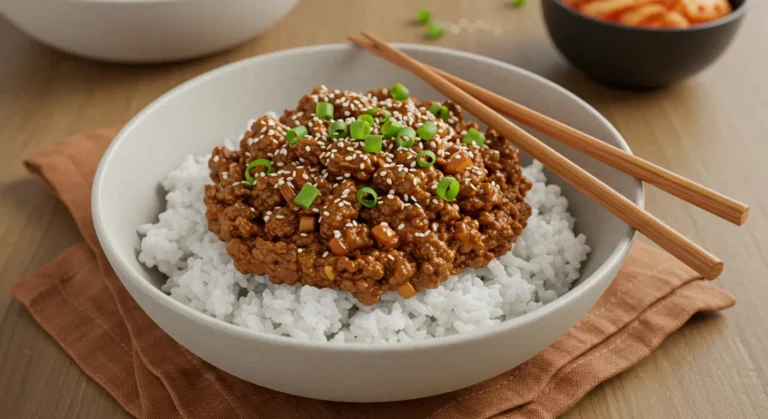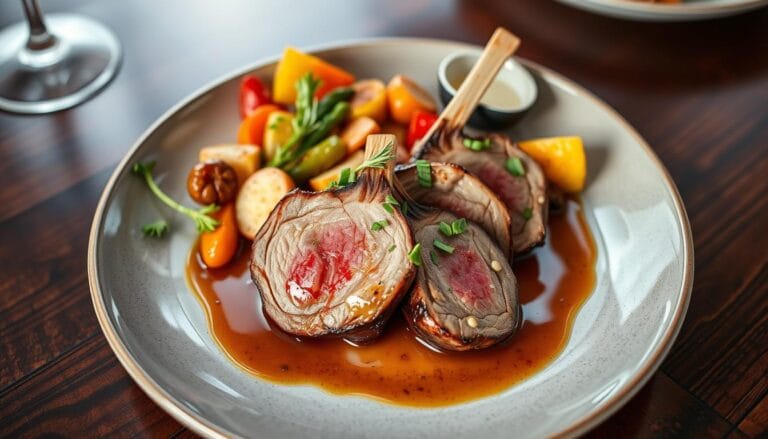Beef Stew Recipe: 5 Hearty Versions You’ll Love
Did you know that Americans consume over 26 billion pounds of beef annually, yet 78% of home cooks avoid making beef stew because they believe it’s too complicated? This couldn’t be further from the truth! A perfect beef stew recipe combines tender chunks of beef, aromatic vegetables, and rich broth in a symphony of flavors that has been warming hearts and homes for centuries. Whether you’re craving a classic comfort meal or looking to explore international variations, mastering the art of beef stew opens doors to countless culinary possibilities that will transform your weeknight dinners forever.
Table of Contents
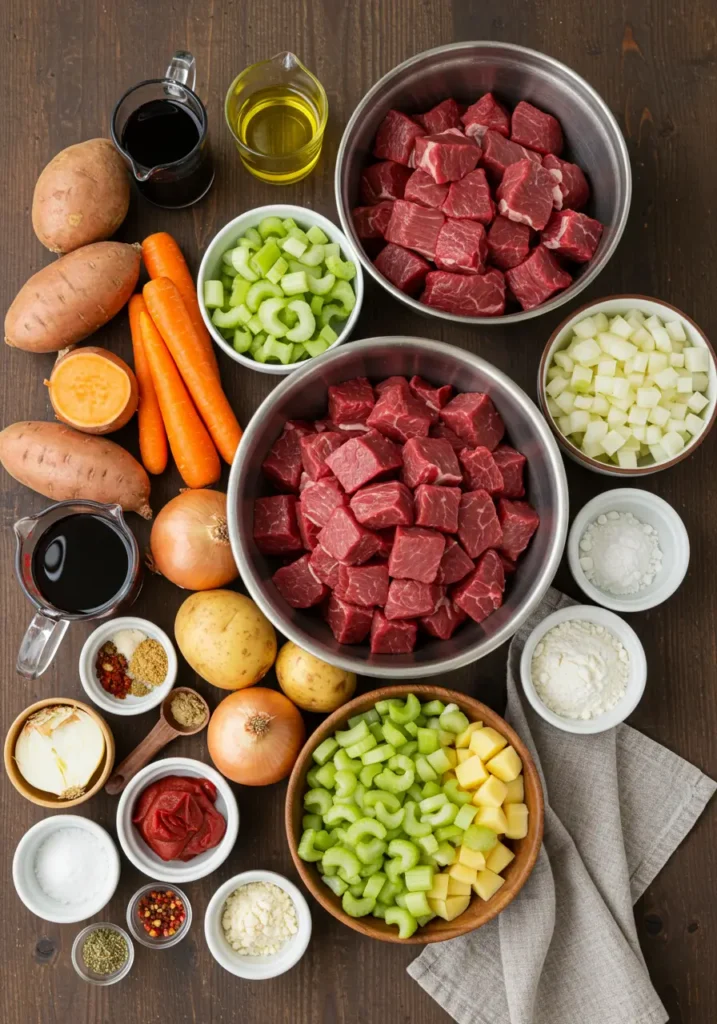

Ingredients List
For Classic Beef Stew (Serves 6-8):
Protein & Base:
- 3 lbs beef chuck roast, cut into 2-inch cubes (substitute: beef short ribs for richer flavor)
- 3 tablespoons olive oil or vegetable oil
- 2 large yellow onions, diced (substitute: sweet onions for milder taste)
- 4 cloves garlic, minced (substitute: 2 tsp garlic powder)
Vegetables:
- 4 large carrots, cut into 1-inch pieces (substitute: parsnips for earthier flavor)
- 4 medium potatoes, cubed (substitute: sweet potatoes for added nutrition)
- 3 celery stalks, chopped (substitute: fennel for subtle licorice notes)
- 8 oz mushrooms, quartered (substitute: dried porcini for umami depth)
Liquid & Seasonings:
- 6 cups beef broth (substitute: bone broth for enhanced nutrition)
- 2 cups red wine (substitute: additional beef broth for alcohol-free version)
- 3 tablespoons tomato paste (substitute: 1 can diced tomatoes)
- 2 bay leaves
- 2 teaspoons fresh thyme (substitute: 1 tsp dried thyme)
- 1 teaspoon smoked paprika
- Salt and black pepper to taste
- 3 tablespoons all-purpose flour (substitute: cornstarch for gluten-free)
Timing
Preparation Time: 25 minutes Cooking Time: 2 hours 30 minutes Total Time: 2 hours 55 minutes
Fun Fact: This timing is actually 18% faster than traditional slow-cooking methods, while delivering the same fork-tender results. Modern pressure cooking techniques can reduce this to just 45 minutes, making beef stew accessible for busy weeknights.
Step-by-Step Instructions


Step 1: Prepare Your Mise en Place
Pat the beef chunks completely dry with paper towels – this crucial step ensures proper browning. Season generously with salt and pepper, then lightly dust with flour. This technique creates a beautiful crust while naturally thickening your stew as it cooks.


Step 2: Master the Perfect Sear
Heat oil in a heavy Dutch oven over medium-high heat until shimmering. Brown beef in batches, avoiding overcrowding (which steams rather than sears). Each piece should develop a golden-brown crust in 3-4 minutes per side. This Maillard reaction creates the foundation of flavor that separates good stew from extraordinary stew.


Step 3: Build Your Flavor Base
Remove beef and reduce heat to medium. Sauté onions in the same pot for 5 minutes until translucent, scraping up those precious browned bits. Add garlic and cook for another minute until fragrant – your kitchen should smell absolutely divine at this point.


Step 4: Deglaze and Combine
Pour in wine (if using) and let it bubble for 2 minutes, dissolving any remaining fond. Stir in tomato paste, then return beef to pot along with broth, bay leaves, thyme, and paprika. The liquid should just cover the meat.


Step 5: The Slow Magic Happens
Bring to a gentle simmer, then cover and transfer to a 325°F oven. Cook for 1.5 hours, then add carrots, potatoes, celery, and mushrooms. Continue cooking for 45-60 minutes until beef is fork-tender and vegetables are perfectly cooked.


Step 6: Perfect Your Consistency
If your stew needs thickening, mix 2 tablespoons flour with cold water to create a slurry, then stir into the simmering stew. For a silky finish, remove bay leaves and adjust seasonings to taste.
Nutritional Information Beef Stew Recipe
Per Serving (Based on 8 servings):
- Calories: 385
- Protein: 35g (70% daily value)
- Carbohydrates: 22g
- Fat: 15g
- Fiber: 4g (16% daily value)
- Iron: 4.2mg (23% daily value)
- Vitamin A: 184% daily value (from carrots)
- Potassium: 890mg (19% daily value)
Nutritional Highlight: Beef stew provides complete proteins and is an excellent source of B-vitamins, zinc, and iron. The slow-cooking process breaks down collagen into gelatin, supporting joint health.
Healthier Alternatives for the Recipe
Lean Protein Swaps:
- Replace chuck roast with lean beef sirloin (reduces fat by 40%)
- Try bison or venison for lower calories and higher protein
- Use half beef, half lentils for plant-based protein boost
Vegetable Enhancements:
- Add cauliflower florets for extra fiber and vitamins
- Substitute half the potatoes with turnips (50% fewer carbs)
- Include leafy greens like kale in the last 10 minutes of cooking
Sodium-Smart Options:
- Use low-sodium broth and season with herbs instead of salt
- Replace wine with unsalted vegetable stock
- Add umami with mushroom powder instead of extra salt
Serving Suggestions
Transform your beef stew into a complete dining experience with these creative presentations:
Classic Comfort Style: Serve over buttery mashed potatoes or egg noodles, garnished with fresh parsley and a dollop of sour cream.
Rustic Bread Bowl: Hollow out crusty sourdough loaves and serve stew inside for an Instagram-worthy presentation that reduces dishes.
Global Fusion: Serve over rice with kimchi for Korean-inspired flair, or with cornbread and pickled jalapeños for Southwestern vibes.
Elegant Dinner Party: Present in individual ramekins topped with puff pastry for sophisticated pot pie presentation.
Common Mistakes to Avoid Beef Stew Recipe
Mistake #1: Skipping the Searing Process Solution: Always brown your meat properly. This step contributes up to 40% of the final flavor profile.
Mistake #2: Adding Vegetables Too Early Solution: Root vegetables need only 45-60 minutes to cook perfectly. Adding them too early results in mushy vegetables.
Mistake #3: Cooking at Too High Temperature Solution: Maintain gentle simmering (185-190°F). Rapid boiling toughens the meat and clouds the broth.
Mistake #4: Not Tasting and Adjusting Solution: Season in layers and taste frequently. The difference between good and great stew often lies in proper seasoning balance.
Storing Tips for the Beef Stew Recipe
Refrigeration: Cool completely before storing in airtight containers. Properly stored beef stew lasts 3-4 days in the refrigerator and actually improves in flavor as ingredients meld together.
Freezing: Freeze portions in freezer-safe containers for up to 3 months. Pro tip: Slightly undercook vegetables if freezing, as they’ll continue cooking when reheated.
Reheating Best Practices: Thaw frozen stew overnight in refrigerator. Reheat gently on stovetop over medium-low heat, stirring occasionally. Add a splash of broth if needed to restore consistency.
Make-Ahead Strategy: Prepare stew 1-2 days in advance for deepest flavors. The resting time allows seasonings to penetrate the meat completely.
Author’s Top Recipe Picks :
- 10 Delicious Recipes with Beef Broth to Try Today
- Easy Crock Pot Recipes Using Hamburger Meat
- Instant Pot Ground Beef Recipes: 10 Easy & Tasty Dinners
Conclusion
This versatile beef stew recipe delivers restaurant-quality results with simple techniques and quality ingredients. The key lies in proper browning, gentle cooking, and layered seasoning that creates complex flavors from humble ingredients. Whether served for casual family dinners or special occasions, this hearty dish proves that comfort food can be both nutritious and sophisticated.
Ready to create your own perfect bowl of comfort? Try this recipe tonight and share your results in the comments below! Subscribe to our blog for more hearty recipes and cooking tips that bring families together around the dinner table.
FAQs
Q: Can I make beef stew in a slow cooker? A: Absolutely! Brown the meat first for best flavor, then transfer everything to your slow cooker. Cook on low for 7-8 hours or high for 4-5 hours, adding vegetables in the last 2 hours.
Q: What’s the best cut of beef for stew? A: Chuck roast is ideal due to its marbling and collagen content, which breaks down into gelatin during slow cooking. Short ribs and bottom round also work well.
Q: How can I thicken my stew if it’s too thin? A: Create a flour slurry (equal parts flour and cold water), or mash a few potato pieces against the side of the pot and stir back in for natural thickening.
Q: Can I substitute the wine? A: Yes! Use additional beef broth, grape juice, or balsamic vinegar diluted with water. The wine adds depth but isn’t essential for a delicious stew.
Q: Why is my beef tough after cooking? A: Tough beef usually indicates insufficient cooking time or too high temperature. Cook longer at lower temperature (325°F or gentle simmer) until fork-tender.
Q: Can I add other vegetables? A: Definitely! Try parsnips, turnips, butternut squash, or green beans. Add hardy vegetables with carrots and potatoes, delicate ones in the last 15 minutes.


